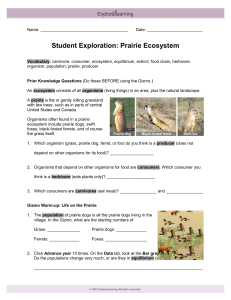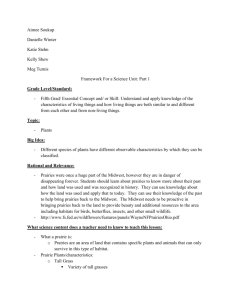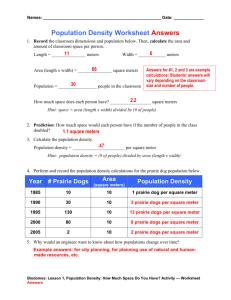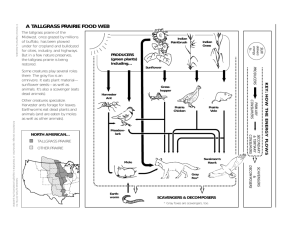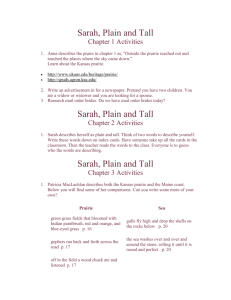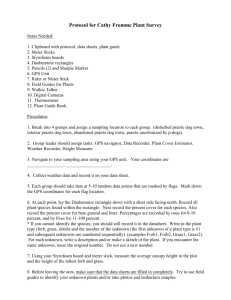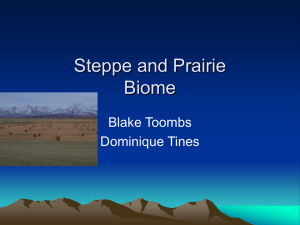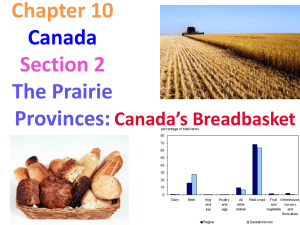Prairie Ecosystem Gizmo
advertisement
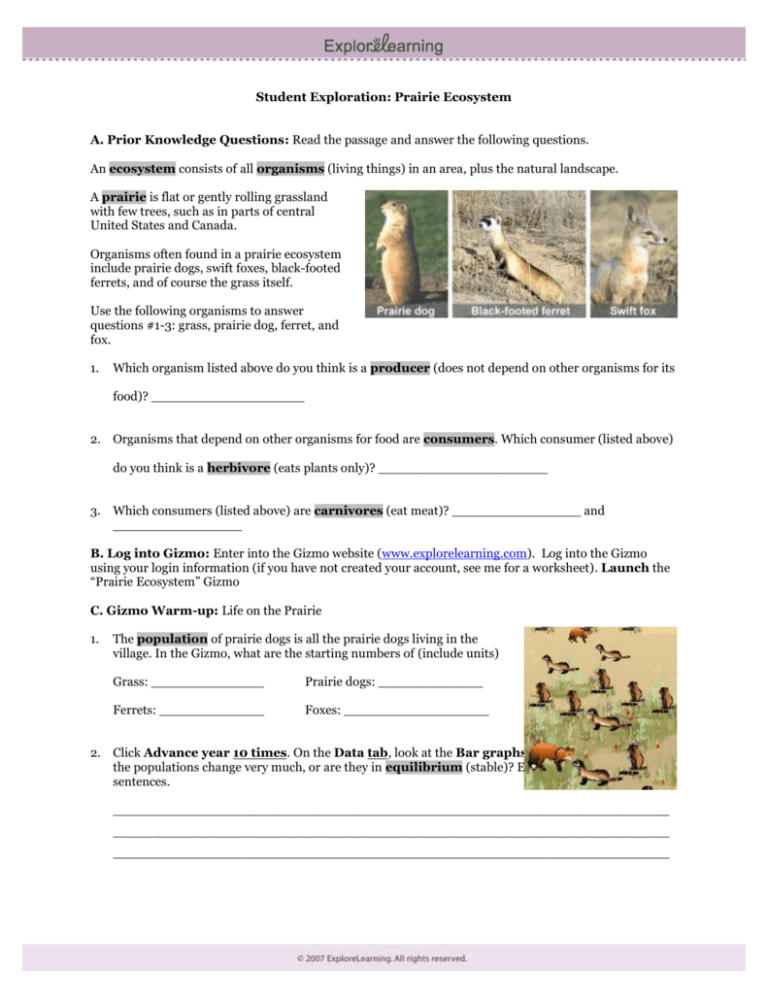
Student Exploration: Prairie Ecosystem A. Prior Knowledge Questions: Read the passage and answer the following questions. An ecosystem consists of all organisms (living things) in an area, plus the natural landscape. A prairie is flat or gently rolling grassland with few trees, such as in parts of central United States and Canada. Organisms often found in a prairie ecosystem include prairie dogs, swift foxes, black-footed ferrets, and of course the grass itself. Use the following organisms to answer questions #1-3: grass, prairie dog, ferret, and fox. 1. Which organism listed above do you think is a producer (does not depend on other organisms for its food)? ___________________ 2. Organisms that depend on other organisms for food are consumers. Which consumer (listed above) do you think is a herbivore (eats plants only)? _____________________ 3. Which consumers (listed above) are carnivores (eat meat)? ________________ and ________________ B. Log into Gizmo: Enter into the Gizmo website (www.explorelearning.com). Log into the Gizmo using your login information (if you have not created your account, see me for a worksheet). Launch the “Prairie Ecosystem” Gizmo C. Gizmo Warm-up: Life on the Prairie 1. The population of prairie dogs is all the prairie dogs living in the village. In the Gizmo, what are the starting numbers of (include units) Grass: ______________ Prairie dogs: _____________ Ferrets: _____________ Foxes: __________________ 2. Click Advance year 10 times. On the Data tab, look at the Bar graphs and the Line graph. Do the populations change very much, or are they in equilibrium (stable)? Explain in 2-3 complete sentences. _____________________________________________________________________ _____________________________________________________________________ _____________________________________________________________________ Activity A: Grass Get the Gizmo ready: Click Reset. Be sure Show population is selected. Question: How is grass important to a prairie ecosystem? 1. Observe: Remove ALL animals from the prairie by clicking the minus (–) button next to each animal many times. Click Advance year 20 times. Does grass survive by itself? Explain using complete sentences. _________________________________________________________________________ Because grass does not depend on other organisms for food, it is a producer. Grass gets what it needs from the Sun, air, and soil. 2. Predict: Click Reset. Predict what will happen to the prairie dogs, ferrets and foxes if half of the grass were removed. Write “increase” or “decrease” in each blank below. Prairie dogs: ______________ Ferrets: ______________ Foxes: ______________ 3. Experiment: Remove about half of the grass by clicking the minus – button. There should now be about 2,000 tons of grass. Click Advance year once, and look at the Bar graphs or the Line graph. What happened to each population—increase or decrease? Prairie dogs: ______________ Ferrets: ______________ Foxes: ______________ 4. Think about it: What do you think will happen if you continue advancing years? _________________________________________________________________________ 5. Experiment: Test your prediction by clicking Advance year until 20 years have passed. A. What do you notice? __________________________________________________ B. Does the ecosystem return to equilibrium? _________________________________ C. How do you know? ___________________________________________________ 6. Extend your thinking: Suppose a fire swept through the prairie. The animals ran away, but about half the grass was burned. What would be the long-term results of this natural event? _________________________________________________________________________ _________________________________________________________________________

